Rack and Pinion Mechanical Box
This antique box is a mechanical prototype that was manufactured under a commission by Queen Victoria during the mid-1840’s.
From first viewing the closed box, one can see that this is indeed something special, but then a few questions arise; what are those engraved brass mounts that look like side handles but aren’t, and what accounts for its near 12kg in weight?
We must open the box and begin to investigate; immediately one’s eyes focus on the network of engraved brass rims with Queen Victoria’s VR initials and crown as a centrepiece, and four curious apertures marked fast and slow. However, it’s those two unusually large brass push buttons on the rear rim of the box that really intrigue above all else.
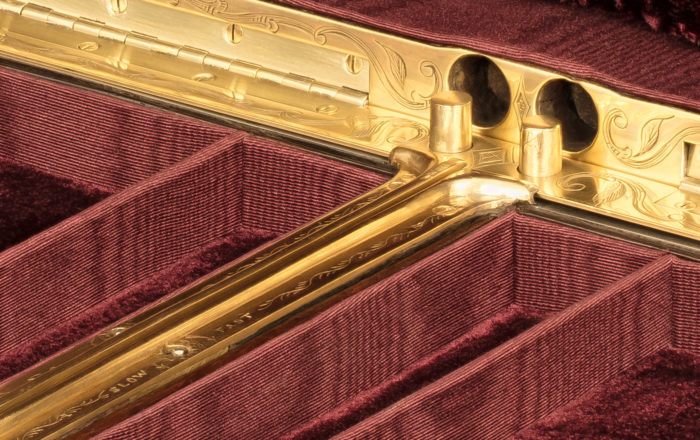
View of the large brass push buttons on the rear rim of the box and the ‘fast’ and ‘slow’ adjustment points (bottom left).
The left-hand push button:
This initiates a sequential movement of sliding steel mitred bars within a system of brass rails that enable the simultaneous retraction of catches to the left and right side walls of the box; this allows the two side trays to slide out automatically. These trays run on individual rack and pinion mechanisms; a spiral torsion spring within each pinion unwinds in order to propel the tray outwards.
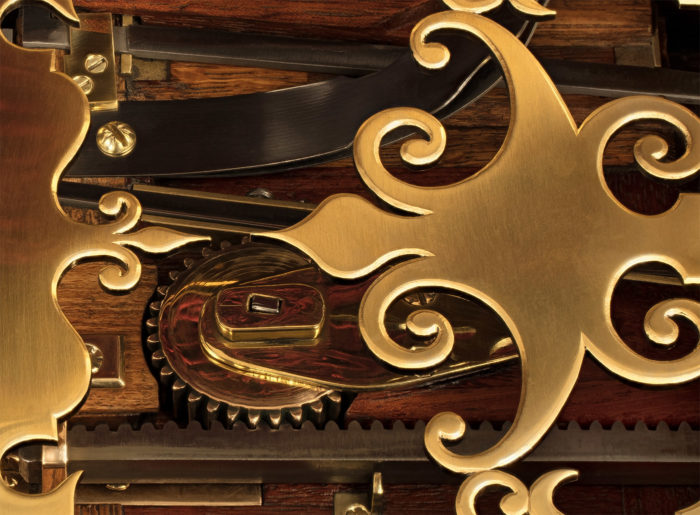
View of the rack (steel linear toothed gear) and pinion (brass circular toothed gear) mechanism. The pinion is internally spring-loaded using a spiral torsion spring.
Another question arises; what is the intended purpose of these most unusual slow and fast adjustment points to each tray? From the surface, one can only see a square threaded shaft through each of the apertures. However, beneath the surface is a screw thread, with a rectangular nut and coiled spring to the end; using its dedicated key, this can be wound up or down to regulate the tension on the spring and, thus, create friction against a steel plate that runs under the tray. It is this friction that is used to slow down or speed up the sliding action of the tray.
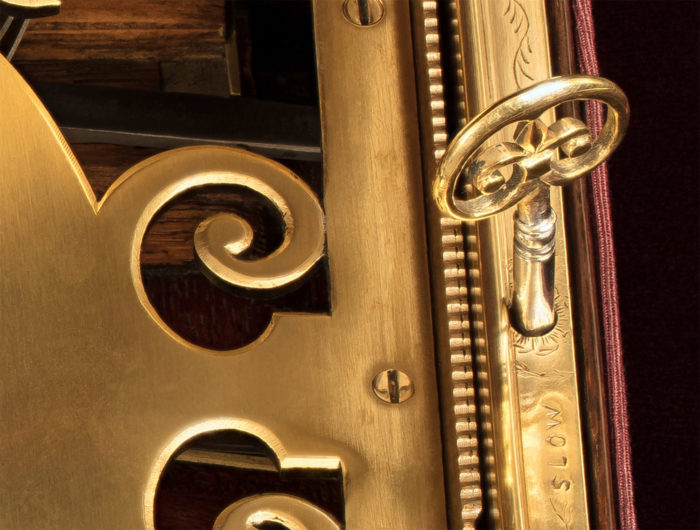
View of the ‘fast’ and ‘slow’ adjustment point with key inserted.
Both trays are fitted with their own spring-loaded secret drawers that are deployed by pressing a concealed trigger in the floor above.
The right-hand push button:
This retracts a centrally mounted steel catch that allows four pairs of steel leaf springs to lift the central brass platform into its fully raised position. The platform has been strategically fretworked to display the mechanism beneath whilst maintaining maximum structural strength at the points where the platform and mechanism interact.
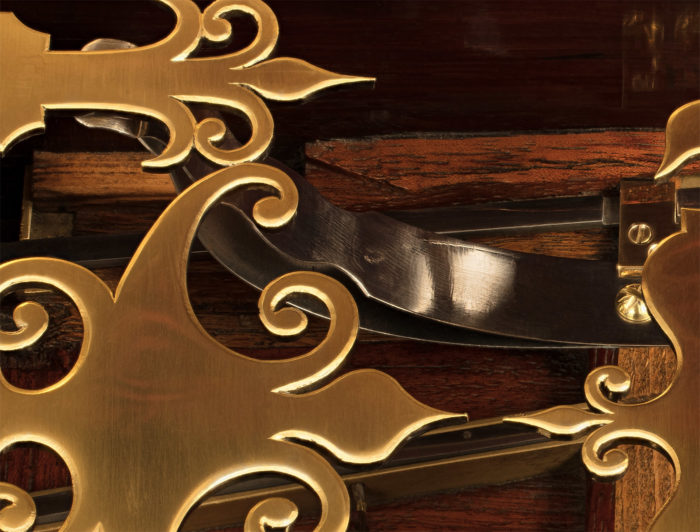
View of a pair of steel leaf springs. The mechanism uses four pairs of these leaf springs to lift the central brass platform.
This box was primarily built to serve as a prototype and, as much as it is an object of beauty in its own right, it seems to be more about showcasing the manufacturer’s engineering excellence, ingenuity and creativity with the hope of impressing this most important of clients.
It is rather astonishing to consider that this box predates the mechanically innovative work of George Betjemann & Sons by at least twenty years, so it is particularly frustrating that this piece was left unsigned.
Everything about this box is extravagant; it’s over-engineered, unnecessarily complicated, excessively powerful in its operation, and almost too heavy duty in build quality for its intended purpose… but what a visual feast of mechanics!
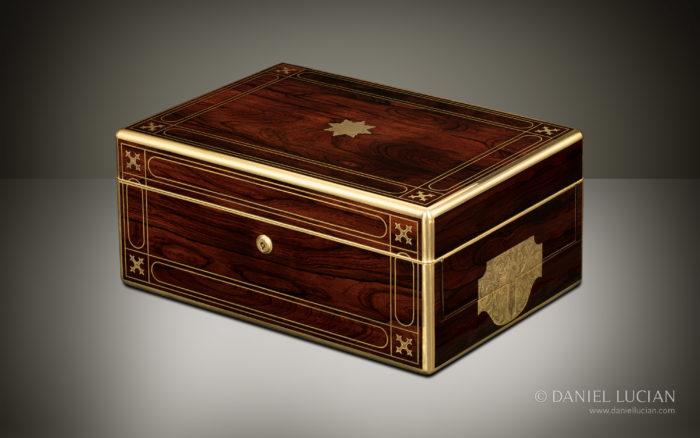
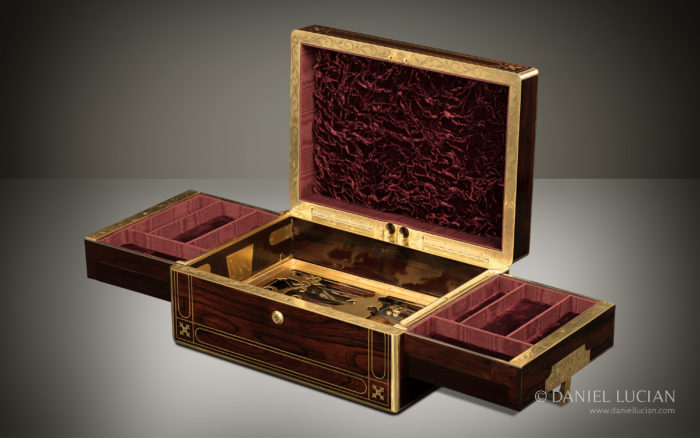
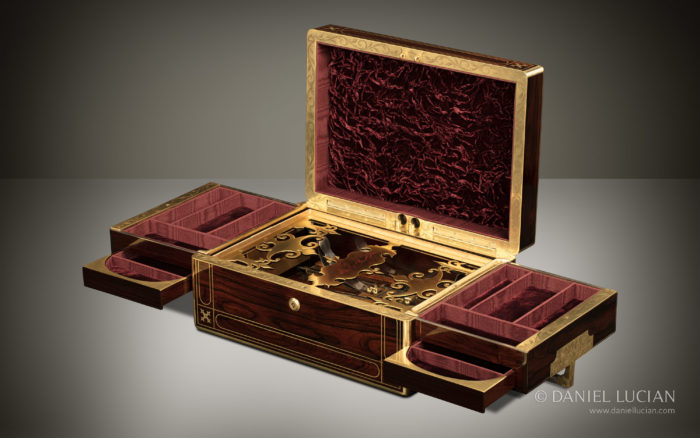
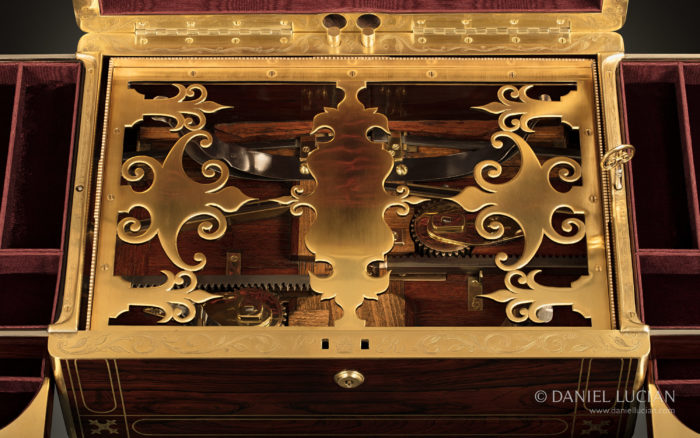
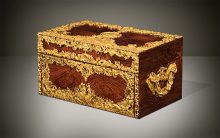 Price On Application
Price On Application